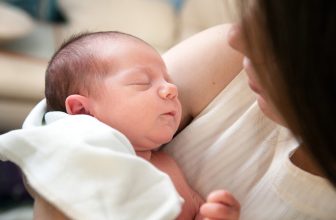As a parent, you want nothing more than to keep your little one safe and comfortable during the chilly winter months. That’s why it’s essential to have the right baby care essentials to ensure your baby stays warm and cozy. From soft and snuggly blankets to insulated clothing and nourishing skin care products, this article will guide you through the must-haves that will help you protect and cocoon your precious bundle of joy during the colder season. So, get ready to embrace the winter months with confidence and keep your little one snug as a bug in a rug with these essential tips and products!
Choosing the Right Clothing
Layering for warmth
When it comes to keeping your baby warm during winter, layering is essential. Layering allows you to adjust your little one’s clothing to the changing temperatures throughout the day. Start with a soft, breathable base layer, such as a onesie or a thermal shirt. This layer will help regulate your baby’s body temperature without causing overheating.
On top of the base layer, add a cozy sweater or a long-sleeved shirt. Opt for materials such as cotton or fleece, as they provide excellent insulation and are gentle on your baby’s delicate skin. Finally, don’t forget the outer layer, whether it’s a jacket, snowsuit, or bunting. Choose a waterproof and wind-resistant option to protect your baby from the elements.
Selecting the right materials
When it comes to choosing winter clothing for your baby, the material is just as important as the style. Look for garments made from natural, breathable fibers like cotton or wool. These materials help regulate your baby’s body temperature and prevent overheating. Avoid synthetic fabrics, as they tend to trap heat and moisture, which can lead to discomfort and skin irritation.
Invest in high-quality clothing that is soft and gentle on your baby’s skin. Check the labels for non-toxic dyes and finishes, as these can cause irritation. Additionally, organic and hypoallergenic options are great choices, especially if your baby has sensitive skin or allergies. Remember, keeping your little one cozy and comfortable starts with choosing the right materials.
Investing in proper outerwear
When it comes to winter baby care, investing in proper outerwear is a must. Look for jackets, snowsuits, or buntings that are specifically designed for cold weather. These garments should provide insulation, be wind and water-resistant, and have a snug fit to keep your baby warm and cozy.
Choose outerwear with features such as a hood or a detachable fur trim. These provide added protection for your baby’s head and face from the cold. Ensure that the outerwear has proper closures, such as zippers or snaps, to make dressing and undressing hassle-free. Remember, investing in quality outerwear is an investment in your baby’s comfort and well-being during the winter months.
Protecting Tiny Feet
Opt for warm and waterproof footwear
Your baby’s tiny feet need extra protection during the winter season. Look for warm and waterproof footwear, such as snow boots or booties. These should have a thick sole for insulation and a water-resistant or waterproof exterior to keep your baby’s feet dry.
Choose footwear that is easy to put on and take off, as this will make dressing your baby more convenient. Look for options with adjustable closures, such as velcro straps or elasticized tops, to ensure a secure fit. Remember, keeping your baby’s feet warm and dry is essential for their overall comfort and well-being.
Use socks or booties with grip
To enhance your baby’s traction and prevent slips and falls, use socks or booties with grip. These have non-slip soles or rubberized grips on the bottom, which provide added stability when your baby starts exploring their surroundings.
When selecting socks or booties, opt for those made from warm and breathable materials like cotton or wool. Avoid slippery fabrics and smooth soles, as they can increase the risk of sliding. Additionally, make sure the socks or booties fit snugly but not too tight, as this can restrict your baby’s movement and circulation.
Consider baby leg warmers
Baby leg warmers are a versatile and practical accessory during the winter months. They can be worn over or under pants to add an extra layer of warmth to your baby’s legs. Leg warmers are particularly useful when your little one is crawling or learning to walk, as they provide additional insulation without restricting movement.
Look for leg warmers made from soft and stretchy materials like cotton or fleece. These can easily be pulled on and off, making diaper changes and dressing a breeze. Choose leg warmers in various colors and patterns to add a fun and fashionable touch to your baby’s winter wardrobe.

This image is property of images.unsplash.com.
Covering the Head and Hands
Wearing a snug hat
A snug hat is an essential winter accessory for your baby. Choose a hat that covers their ears and fits securely but comfortably. Look for hats made from warm, breathable, and non-itchy materials like cotton or fleece. Avoid hats with strings or loose decorations that could pose a choking hazard.
Consider hats with a chin strap or ear flaps for added warmth and protection. These features help keep the hat securely in place and prevent it from slipping off your baby’s head. Remember, keeping your baby’s head covered is crucial as a significant amount of heat can be lost through the head.
Using mittens or gloves
Just like their feet, your baby’s hands need protection from the cold as well. Mittens or gloves are the perfect solution to keep their tiny hands warm and cozy. Look for options that are waterproof and insulated, providing optimal protection from the elements.
Consider mittens or gloves with adjustable closures, such as elastic or velcro straps. This ensures a snug fit and prevents them from slipping off your baby’s hands. Additionally, opt for options with a soft lining to maximize comfort. Remember to check your baby’s hands regularly to ensure they are warm and not overheating.
Exploring hand warmers
For extra warmth on particularly chilly days, consider using hand warmers for your baby. Hand warmers are small, portable heating pads that can be placed inside mittens or gloves to provide continuous warmth. These are particularly useful during outdoor activities or when exposed to extreme cold for an extended period.
Choose hand warmers specifically designed for babies, as they are safe and gentle on their delicate skin. These hand warmers typically have a low-temperature setting and a limited duration to prevent burns or overheating. Always follow the manufacturer’s instructions and monitor your baby’s hands closely when using hand warmers.
Keeping the Body Warm
Utilize thermal or fleece blankets
When it’s time for nap or bedtime, keeping your baby’s body warm becomes crucial. Utilize thermal or fleece blankets to provide an extra layer of insulation and comfort. Look for blankets made from soft, breathable, and hypoallergenic materials to ensure your baby’s safety and well-being.
Choose blankets that are the appropriate size for your baby’s crib or bassinet. Oversized blankets can increase the risk of suffocation or entanglement, so ensure they fit snugly. Remember to tuck the blanket securely under the mattress to prevent it from becoming loose or covering your baby’s face.
Consider a baby sleeping bag
A baby sleeping bag is an excellent alternative to traditional blankets, offering a safer and more comfortable sleep environment for your little one. Sleeping bags provide insulation while allowing your baby freedom of movement. Look for sleeping bags made from breathable materials like cotton or muslin, as these help regulate your baby’s body temperature.
Choose sleeping bags with a suitable tog rating to match the room temperature. Tog ratings provide an indication of the warmth and thickness of the sleeping bag. Consider options with adjustable shoulder straps and a front zipper or buttons for easy dressing and diaper changes. Remember, a baby sleeping bag provides a cozy and secure sleep environment for your little one.
Using a car seat or stroller cover
When you’re out and about with your baby during the winter, it’s essential to use a car seat or stroller cover to protect them from the cold and wind. These covers provide an extra layer of insulation and act as a barrier against the elements.
Look for covers that are specifically designed for car seats or strollers, ensuring proper fit and functionality. Choose options that are waterproof, wind-resistant, and have adjustable closures to adapt to changing weather conditions. Additionally, opt for covers with a clear plastic window so you can easily check on your little one without exposing them to the cold.
This image is property of images.unsplash.com.
Maintaining Optimal Room Temperature
Setting the thermostat correctly
Maintaining an optimal room temperature is essential for your baby’s comfort and well-being during winter. Set your thermostat between 68°F and 72°F (20°C and 22°C) to provide a warm and cozy environment. Ensure that the temperature is consistent throughout the day and night, as fluctuating temperatures can disrupt your baby’s sleep patterns.
Invest in a programmable thermostat to easily regulate the room temperature and save energy. This allows you to adjust the temperature according to your baby’s schedule, ensuring a comfortable environment at all times. Remember, maintaining a consistent room temperature is crucial for your baby’s overall health and happiness.
Using a space heater or humidifier
In addition to setting the thermostat, using a space heater or humidifier can help maintain an optimal room temperature during the winter months. Space heaters provide additional warmth in specific areas of your home, ensuring your baby stays cozy even when the overall temperature is lower.
Choose a space heater with safety features such as automatic shut-off and tip-over protection. Place the heater away from your baby’s reach and ensure it is on a stable surface. Always monitor the temperature and adjust the heater accordingly to prevent overheating.
A humidifier helps combat dry air, which can cause discomfort and respiratory issues for your baby. Opt for a cool-mist humidifier, as it is safer and more suitable for the nursery. Keep the humidifier clean and follow the manufacturer’s instructions for optimal performance. Remember, maintaining a comfortable humidity level contributes to your baby’s overall well-being.
Insulating windows and doors
To further maintain a warm and cozy environment for your baby, consider insulating your windows and doors. Use weatherstripping or draft blockers to seal any gaps and prevent cold air from entering your home. This helps to regulate the room temperature and reduce heating costs.
Apply window film or use thermal curtains to add an extra layer of insulation. These options minimize heat transfer and prevent drafts, keeping the room warm and comfortable for your baby. Additionally, keep windows and doors closed as much as possible to retain warmth during the winter season.
Bathing Your Baby During Winter
Adjusting bathwater temperature
Bathing your baby during winter requires extra care to ensure their safety and comfort. To avoid exposing your little one to cold temperatures, adjust the bathwater temperature accordingly. The ideal bathwater temperature for babies is between 98°F and 100°F (37°C and 38°C).
Invest in a reliable bath thermometer to accurately monitor the water temperature. This helps prevent scalds or burns caused by water that is too hot. Remember to test the water with your own hand or elbow before placing your baby in the bath to ensure it’s comfortable and safe.
Drying thoroughly and quickly
After bathing your baby, it’s crucial to dry them thoroughly and quickly to prevent chilling. Wrap your baby in a warm and absorbent towel, gently patting them dry. Pay extra attention to the creases and folds of their skin to prevent moisture buildup.
Consider using a hooded towel to cover your baby’s head and keep them warm while drying. Ensure that all areas, especially the diaper area, are thoroughly dry before dressing your baby. Remember, keeping your baby dry helps prevent discomfort, skin irritation, and potential health issues.
Moisturizing the skin
Winter weather can be harsh on your baby’s delicate skin, leading to dryness and irritation. To combat this, incorporate moisturizing into your baby’s skincare routine. After bathing, apply a baby-safe moisturizer to lock in moisture and keep their skin soft and hydrated.
Choose products that are specifically formulated for babies and free from harsh chemicals or fragrances. Look for moisturizers that contain natural ingredients like shea butter or coconut oil, as these provide gentle and nourishing hydration. Remember to apply the moisturizer consistently, especially in areas prone to dryness, such as the face, hands, and feet.
This image is property of images.unsplash.com.
Protecting from Cold Winds
Using windproof clothing
Cold winds can make the temperature feel even colder, putting your baby at risk of discomfort and chill. Dress your little one in windproof clothing to provide optimal protection. Look for jackets, snowsuits, or buntings with a windproof exterior to shield your baby from the gusts.
Choose options with adjustable closures and secure them tightly to prevent wind from entering. Additionally, opt for clothing with high collars or hoods for added coverage and warmth. Remember, proper windproof clothing is essential to protect your baby during outdoor activities or walks.
Avoiding exposure to extreme winds
While it’s important to expose your baby to fresh air and outdoor activities, it’s equally important to avoid extreme winds. Exposure to strong winds can quickly lower your baby’s body temperature and lead to discomfort or illness.
Monitor the weather forecast and avoid going outside on particularly windy days. If you must venture out, choose protected areas or use wind barriers such as a stroller cover or a baby carrier. Keep your outings shorter and pay close attention to your baby’s cues for any signs of discomfort.
Creating wind barriers if necessary
In situations where wind protection is limited, create additional wind barriers to shield your baby. Use blankets or a specially designed windproof cover to block the wind from reaching your little one. Ensure that the barriers are secure and do not pose any suffocation or entanglement risks.
When creating wind barriers, be mindful of your baby’s comfort and exposure. Ensure there is proper ventilation and regularly check on your baby’s well-being. Remember, creating wind barriers allows you to enjoy outdoor activities while keeping your baby safe and cozy.
Tips for Safe Travel
Warming up the car interior beforehand
Before embarking on any car journey with your baby during winter, it’s essential to warm up the car interior. Start the car a few minutes before departure to allow the heater to warm up the cabin. This creates a comfortable and cozy environment for your baby.
In extreme cold weather conditions, consider using a car seat cover to help retain warmth. However, always ensure that the car seat cover is safe and does not interfere with the proper use of the car seat. Follow the manufacturer’s guidelines and use the cover as an additional layer, not a replacement for warm clothing.
Using a rear-facing car seat
Choosing the right car seat is crucial for your baby’s safety and comfort during winter travel. Opt for a rear-facing car seat, as they provide better protection in the event of a collision. Rear-facing car seats cradle your baby’s head, neck, and spine, reducing the risk of injury.
Ensure that your baby is correctly buckled into the car seat and that the harness is snug but not too tight. Bundle your baby in warm and breathable clothing, layering as necessary. Avoid bulky winter jackets or clothing that can compromise the fit of the car seat harness.
Avoiding bulky winter clothing in the car seat
It’s important to avoid bulky winter clothing when dressing your baby for the car seat. Bulky clothing, such as puffy jackets or snowsuits, can create a gap between your baby and the harness straps, compromising their safety.
Instead, dress your baby in thin, warm layers that can easily be removed if necessary. Layering allows for proper harness fit while keeping your baby cozy. Use blankets or car seat covers to provide additional warmth during the car journey. Remember, prioritizing proper car seat safety over warmth is crucial for your baby’s protection.
Preventing Dryness and Irritation
Using a humidifier in the nursery
Winter air tends to be dry, which can cause dryness and irritation for your baby’s skin. Combat this by using a humidifier in the nursery. A humidifier adds moisture to the air and helps maintain a comfortable humidity level.
Choose a cool-mist humidifier as it is safer and more suitable for babies. Clean the humidifier regularly and follow the manufacturer’s instructions for optimal performance. Monitor the humidity level in the nursery and adjust the humidifier settings as needed. Remember, a humidifier can help prevent dryness and promote your baby’s overall comfort.
Applying baby-safe moisturizers
In addition to using a humidifier, applying baby-safe moisturizers is essential for preventing dryness and irritation during winter. Look for moisturizers specifically formulated for babies and free from harsh chemicals or fragrances.
After bathing and before dressing your baby, apply a thin layer of moisturizer to their skin. Pay special attention to areas prone to dryness, such as the face, hands, and feet. Gently massage the moisturizer into the skin, promoting absorption and nourishment. Remember, consistent moisturizing helps keep your baby’s skin soft, hydrated, and protected.
Avoiding harsh fabrics and irritants
To prevent dryness and irritation, it’s important to avoid harsh fabrics and potential irritants. Choose clothing made from soft, breathable, and hypoallergenic materials to minimize skin irritation. Look for labels indicating that the fabric is non-toxic and safe for sensitive skin.
Avoid using heavily scented laundry detergents, fabric softeners, or dryer sheets when washing your baby’s clothes. These products can leave residue and contain chemicals that may irritate your baby’s skin. Opt for fragrance-free and mild detergents specially formulated for babies. Remember, being mindful of fabrics and irritants helps maintain your baby’s skin health during winter.
Recognizing Signs of Overheating or Cold
Checking baby’s temperature regularly
Monitoring your baby’s temperature regularly is important during winter. Check for signs of overheating or cold to ensure their comfort and well-being. Use a reliable digital thermometer to measure your baby’s temperature accurately.
The ideal temperature range for babies is between 97°F and 100°F (36°C and 37.8°C). If your baby’s temperature falls outside this range, take appropriate measures to warm them up or cool them down. Always consult a healthcare professional if you have concerns about your baby’s temperature.
Monitoring for flushed skin or chills
Keep a close eye on your baby’s skin to detect any signs of overheating or chills. Flushed or red skin can be an indication of overheating, while pale or cool skin may suggest that your baby is cold. Touch your baby’s skin to assess its temperature and adjust their clothing or environment accordingly.
Pay attention to your baby’s behavior as well. Excessive crying, irritability, or lethargy can be signs of discomfort caused by overheating or cold. Trust your instincts as a parent and respond promptly to your baby’s needs. Remember, monitoring your baby’s skin and behavior helps ensure their well-being and comfort during the winter season.
Seeking medical attention if necessary
If you notice persistent or severe signs of overheating or cold, it’s crucial to seek medical attention. Contact your pediatrician or healthcare provider for guidance and advice. They can assess your baby’s condition and provide appropriate medical care if necessary.
Additionally, reach out to a healthcare professional if your baby shows signs of illness, such as a fever, congestion, or difficulty breathing. Winter months can increase the risk of respiratory infections, so it’s important to take any symptoms seriously. Remember, seeking timely medical attention is essential for your baby’s health and safety.
In conclusion, winter baby care requires attention to detail and careful preparation to keep your little one warm and cozy. By choosing the right clothing, protecting tiny feet, covering the head and hands, keeping the body warm, maintaining optimal room temperature, bathing your baby correctly, protecting from cold winds, practicing safe travel, preventing dryness and irritation, and recognizing signs of overheating or cold, you can ensure your baby’s comfort and well-being during the winter season. With these winter baby care essentials in mind, you can enjoy the colder months with peace of mind, knowing that your little one is safe and warm.










